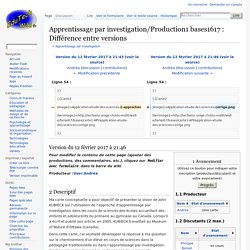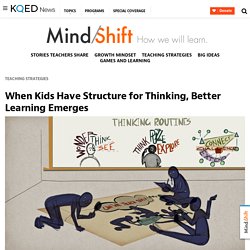

How Helping Students to Ask Better Questions Can Transform Classrooms. To get started with the QFT, first give students time to develop as many questions as they can, with the instruction not to worry if it’s a “good or bad” question. The only requirement is that they be questions, not statements. After the initial fast brainstorm, talk about the difference between closed and open questions, discussing the advantages and disadvantages of both. Then ask students to categorize their questions as “open” or “closed.” The next step is to ask students to change some of their questions from open to closed and vice versa. “It’s in the working with the questions that something happens,” said Rothstein, co-director of The Right Question Institute, during a session at the Building Learning Communities conference.
After working with questions they developed in this way, ask students to pick their best three questions. After producing, improving and strategizing about their questions, the last step is to reflect upon the experience of asking and modifying questions. #Pédagogie Comment questionner les élèves de manière efficace et stimulante ? Une étude (en math. mais valable pour ttes disciplines) très i… Apprentissage par investigation/Production1 bases1617 : Différence entre versions. Version du 12 février 2017 à 21:46 1 Avancement Utilisez ce bouton pour indiquer votre inscription (producteur/discutant) et votre avancement!

1.1 Producteur 1.2 Discutants (2 max.) Pour modifier le contenu de cette page (ajouter des productions, des commentaires, etc.), cliquez sur Modifier avec formulaire dans la barre du wiki. Producteur :User:Andréa 2 Descriptif Ma carte conceptuelle a pour objectif de présenter la vision de John KUBIECK sur l'utilisation de l'approche d'apprentissage par investigation dans les cours de sciences des écoles accueillant des enfants et adolescents du primaire au gymnase au Canada. Dans cette carte, j'ai souhaité développer la réponse à ma question sur le cheminement d'un élève en cours de sciences dans la pédagogie traditionnelle ou dans l'apprentissage par investigation. Par contre, j'ai préparé 2 cartes génériques sur l'apprentissage par investigation qui seront ajoutées à ma vidéographie. 3 Sources KUBIECK, John P.
Edutechwiki : Lien vers une carte externe: Ecole: de l'art du débat en CE1 selon la pédagogie Freinet. When Kids Have Structure for Thinking, Better Learning Emerges. Amidst the discussions about content standards, curriculum and teaching strategies, it’s easy to lose sight of the big goals behind education, like giving students tools to deepen their quantitative and qualitative understanding of the world.

Teaching for understanding has always been a challenge, which is why Harvard’s Project Zero has been trying to figure out how great teachers do it. Some teachers discuss metacognition with students, but they often simplify the concept by describing only one of its parts — thinking about thinking. Teachers are trying to get students to slow down and take note of how and why they are thinking and to see thinking as an action they are taking. But two other core components of metacognition often get left out of these discussions — monitoring thinking and directing thinking. When a student is reading and stops to realize he’s not really understanding the meaning behind the words, that’s monitoring.